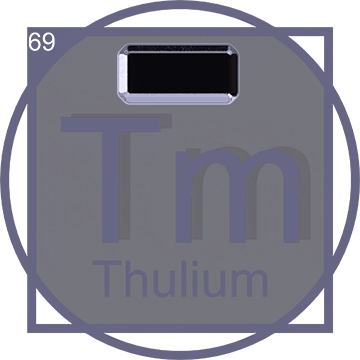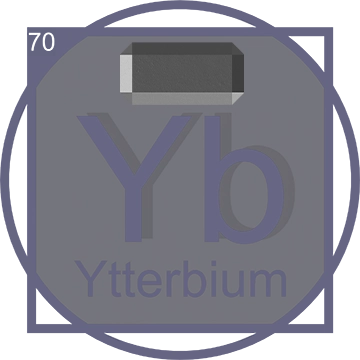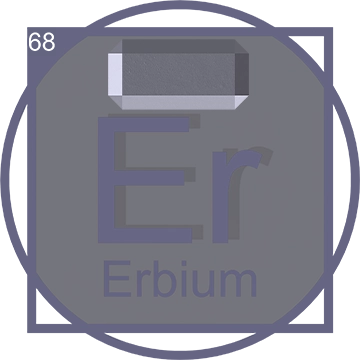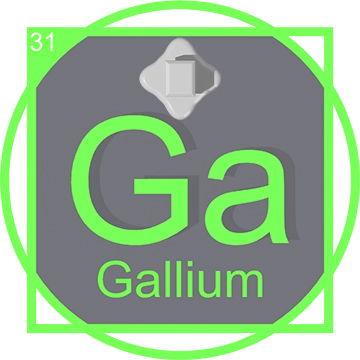Thulium (Tm): From Discovery to Technological Applications
Thulium, with its chemical symbol Tm, is a lesser-known yet fascinating member of the rare earth elements in the lanthanide series. This extensive guide delves into the discovery of Thulium, its properties, its position within the periodic table, and its varied applications in the fields of science and technology.
The Discovery of Thulium

Thulium was discovered by Swedish chemist Per Teodor Cleve in 1879. The discovery was made when Cleve was working on removing impurities from rare earth oxides, which led him to identify two previously unknown elements, holmium and thulium. Named after Thule, a mythical region in Scandinavia, Thulium shines with a bright silvery luster and is the least abundant of the naturally occurring rare earths.
Thulium in the Periodic Table
Occupying position 69 in the periodic table, Thulium is characterized by its softness, malleability, and ductility. It is part of the lanthanide series, known for its +3 oxidation state. Thulium's electrons are configured as [Xe]4f136s2, making it one of the more reactive rare earth metals, albeit less so compared to others in its series.
Pure Thulium and Its Technological Applications
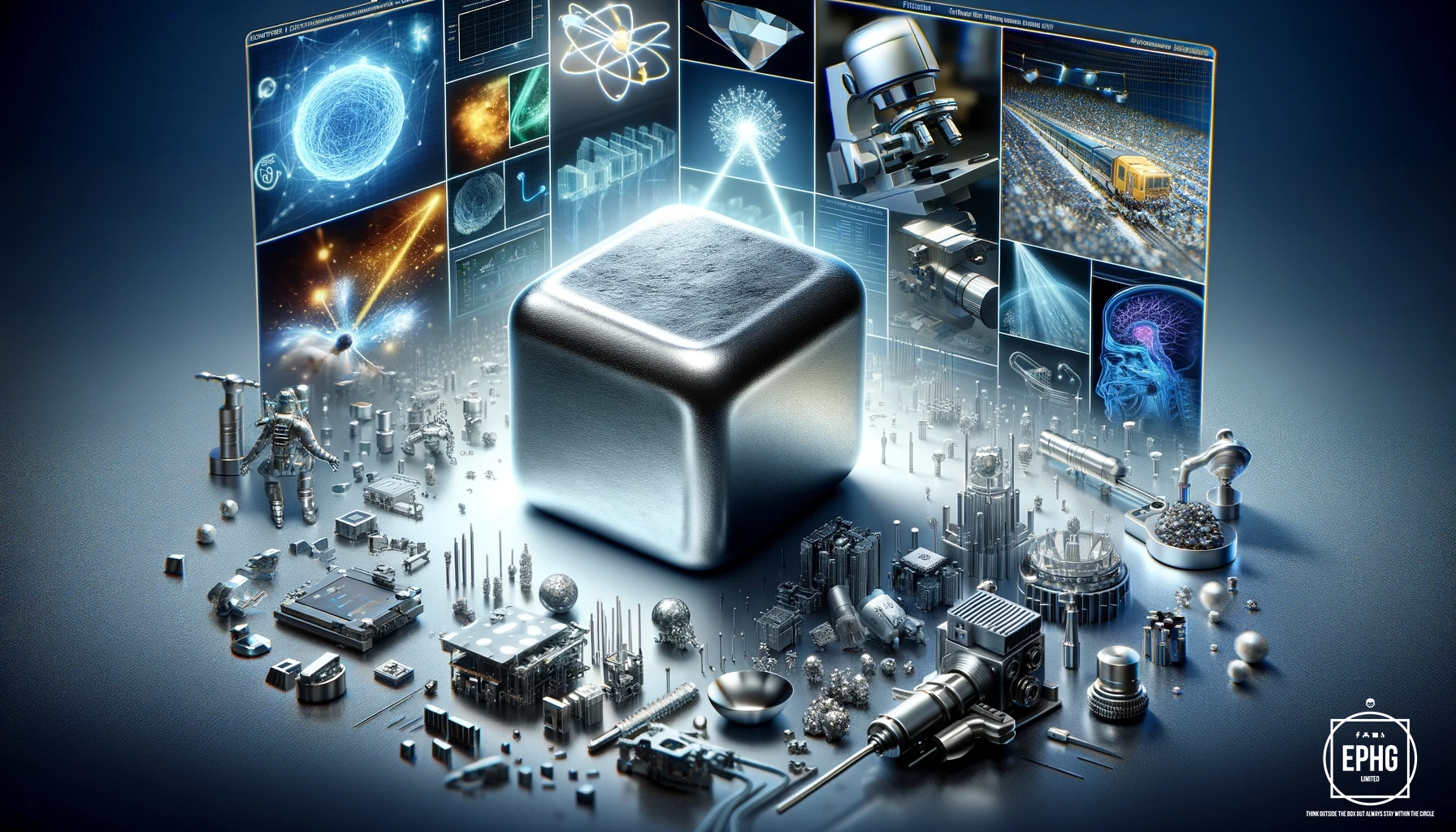
This image captures the essence of Pure Thulium, showcasing the metal in its most refined, silvery form at the forefront. In the subtle yet intricate background, you can see its various applications in technology—ranging from medical imaging equipment, where Thulium is used for its radiation properties, to semiconductor components that utilize its stability under extreme conditions. Additionally, the high-power laser systems depicted emphasize Thulium's role in industrial and scientific advancements. This visual juxtaposition highlights Thulium's fundamental purity alongside its practical utility in advancing modern technology.
Scientific Properties of Thulium
Thulium is distinctive for its high magnetic susceptibility and unique spectroscopic signatures. It melts at 1545 degrees Celsius and has a boiling point of 1950 degrees Celsius. Despite its rarity, Thulium's stable isotope, Thulium-169, is remarkably non-radioactive compared to many other lanthanide elements, which often include minor radioactive isotopes.
Mining of Thulium

Thulium, being one of the least abundant rare earth elements, is primarily mined through the extraction of minerals that contain rare earth elements from monazite and bastnäsite ores. The mining process for Thulium involves complex metallurgical techniques, as it is typically found in minute quantities and requires sophisticated technology to separate it from other rare earth elements. The extraction often involves the use of solvent extraction and ion exchange methods, which are vital for isolating Thulium in a pure form. Due to its scarcity, the mining of Thulium is a careful and precise operation, focusing on maximizing yield while minimizing environmental impact.
Here is a list of other elements normally mined alingside Thulium:
One particle mine you can find these resource is the Kvanefjeld Mine in Kujalleq, Greenland.
Technological Applications of Thulium
Medical Imaging and Radiology with Thulium

One of the most significant uses of Thulium is in the medical field, particularly in radiology. Thulium-170, an artificially produced isotope, emits X-rays and is used in portable X-ray devices that require less shielding, making it ideal for use in smaller, more mobile units. This isotope's unique properties allow for sharper imaging, which is crucial for accurate diagnoses in medical settings. Furthermore, the reduced shielding requirement not only makes the equipment lighter but also reduces the cost and complexity of medical imaging solutions, enabling broader accessibility and utility in various healthcare scenarios, including remote and rural areas where large, conventional X-ray machines are impractical.
Electronics and Semiconductor Manufacturing with Thulium
In the electronics industry, Thulium is utilized for its ability to dope calcium fluoride, producing materials that enhance the efficiency of solid-state devices. Its use in semiconductors is crucial for developing technologies that require reliable, durable materials capable of withstanding high temperatures and radiation levels.
Energy and High-Power Lasers with Thulium

Thulium-doped yttrium aluminum garnet (Tm:YAG) lasers are powerful tools used in industrial applications for cutting and engraving materials. These lasers are valued for their exceptional efficiency and the precision they offer in processing materials that are difficult to handle by other methods. Furthermore, Thulium lasers operate at wavelengths that are highly absorbed by water and other biological tissues, making them also ideal for medical applications such as surgeries and skin treatments. The ability of these lasers to deliver precise and controlled energy minimizes damage to surrounding tissues, enhancing patient outcomes in medical procedures. In addition to their industrial and medical uses, Thulium-doped lasers are being explored for their potential in scientific research, where their unique properties can be utilized in spectroscopy and photonics experiments.
Nuclear Reactors and Thulium
Thulium is investigated for use in nuclear reactors where it can absorb neutrons and help control the reaction process. Its potential for use in this capacity is significant given the ongoing search for more efficient and safer reactor designs.
The Future of Thulium
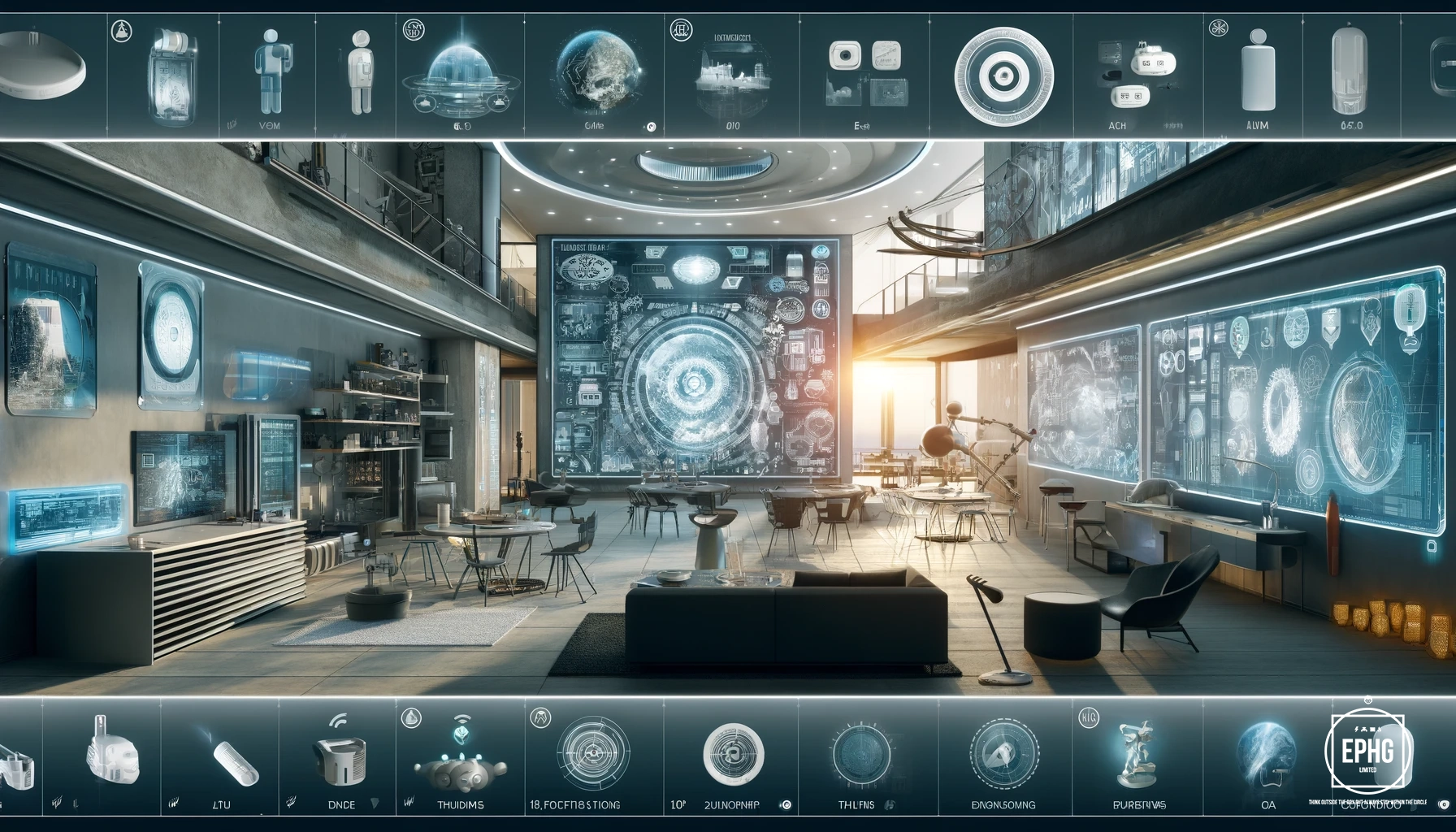
This image showcases a futuristic room that epitomizes the integration of advanced Thulium technology into everyday life, set 100 years in the future. The room serves as both a living space and a high-tech workshop, equipped with a variety of Thulium-powered devices and gadgets. Key features include Thulium-powered lighting systems that illuminate the space with efficiency, interactive walls and tables that display dynamic data and imagery, and compact personal robots and tools that operate seamlessly on Thulium energy. The modern and sleek decor highlights the role of Thulium in enhancing functionality and sustainability, providing a glimpse into a future where technology and living spaces are intricately linked.
